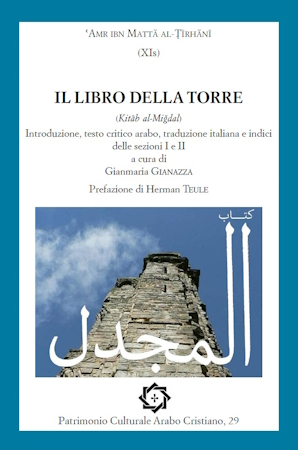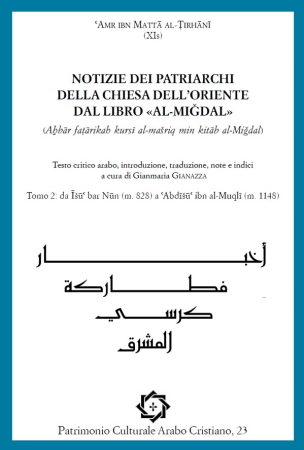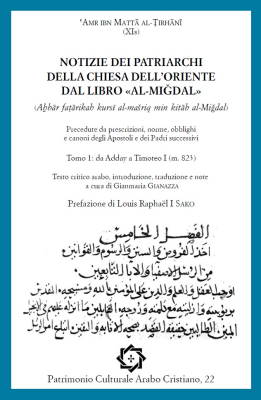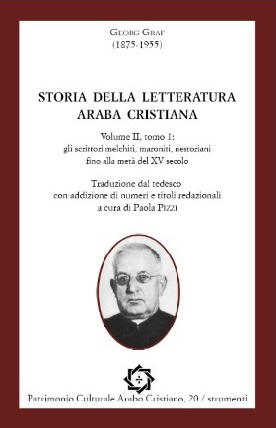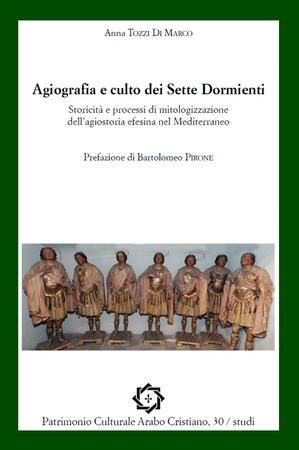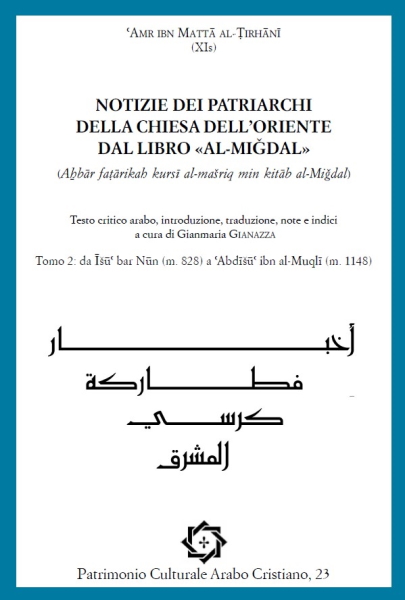Qusṭā ibn Lūqā, Epistola sulla differenza tra lo spirito e l'anima
(«Risālah fī al-faṣl bayn al-rūḥ wa-l-nafs»)
Meglio noto nell'Occidente medievale latino con il titolo De differentia spiritus et animae
a cura di Michele Meroni e Davide Righi.
Tomo 2: Testo critico arabo, traduzione italiana, latina ed ebraica, fonti e indici
Edizioni del Gruppo di Ricerca Arabo-Cristiana, Bologna
رسالة
في الفصل بين الروح والنفس لقسطا ابن لوقا
المعروفة في القرون الوسطى في العالم اللاتيني بـ
"De differentia spiritus et animae"
حَقَّقَها، قسَّمَها، وَتَرْجَمَهَا إِلَى ٱللُّغَةِ ٱلْإِيطَالِيَّةِ
ٱلْأُسْتَاذُ دَاوُد رِيغِي
وَدَرَسَهَا الأسْتَاذان
مِيكِيلِي مِيرُونِي وَدَاوُد رِيغِي
مُقَدِّمَة بِقَلَمِ ٱلْأُسْتَاذ بِيطِر آدَمْسُن
Sample pages (unavailable)
 Acquista su
Acquista su ![]() Amazon!
Amazon!
Authored by the Christian physician Qusṭā ibn Lūqā (9th-early 10th century), who lived mainly in Baghdad and moved to Armenia in the last years of his life, the epistle (risālah) experienced a remarkable circulation in the medieval Islamic world.
Qusṭā’s work was referenced to by famous biographers such as Ibn al-Nadīm, al-Qiftī, and Ibn Abī Uṣaybiʿah, who all lived between the 10th and the 13th century. The Latin translation, carried out by John of Seville (Johannes Hispalensis) in Spain around the second quarter of the twelfth century became even more popular than in the Islamic World. Thanks to its inclusion in the ancient body (corpus vetus) of Aristotle's natural philosophy, the De differentia spiritus et animae is preserved in more than 150 manuscripts.
During the Middle Ages, Qusṭā’s work belonged to the list of mandatory texts studied in the curriculum of Artes (philosophy) in all major European universities. The main reason for a favorable reception of the work lies in its amphibious nature, halfway between medicine and philosophy. On the one hand, it presents a concise but detailed physiological analysis of the cardiovascular and nervous systems. On the other hand, though, it has the merit of schematically presenting psychological doctrines on the human soul that harmonize Platonic and Aristotelian psychology in a manner that is compatible with the beliefs of the Christian faith (Qusta was a Melkite Christian).
This peculiar interplay between anatomy and psychology, together with a clear-cut and schematic distinction between spirit and soul, two terms often mistaken and exchanged for each other, aroused the interest of medieval philosophers and theologians of the 12th and 13th centuries and most notably that of Albert the Great, teacher of Thomas Aquinas.



